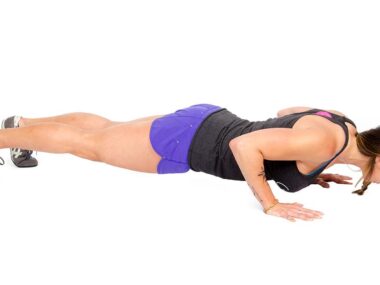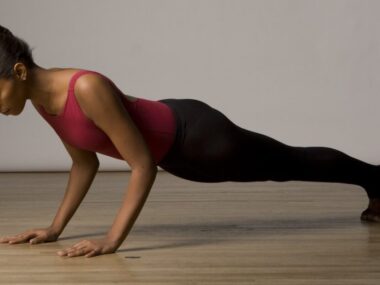There’s no need to run fast in training – except you want to run faster in races.
If you’re new to running and you’ve just caught the racing bug, finishing a 5K is likely no longer an issue; finishing it faster, however, is presenting a problem. So how do you get pass this racing road block?
The solution is as simple as sprinkling some small doses of speed work into your training schedule. As a new runner, possibilities are you’re running over the same roads or on the same treadmill at the same speed every day. You’re using the same muscles in the same manner every time you lace up your running shoes. Then, when it comes time to race, you find yourself stuck in second gear from start to finish. In order to start shifting speeds, your metronomic muscle memory will require some new stimulation.
If you’re new to racing and want to reach the finish line faster, use these simple suggestions to safely start inserting some speed work into your training schedule.
Fartlek
Once you’ve made strides a regular part of your training regimen, you’ll be ready to start stepping up the speed work ladder. Fartlek — Swedish for “speed play” — is a great way to get your wheels spinning. This type of speed workout can be done on the roads, trails or treadmill and all you’ll need is a little imagination or a reliable watch.
Essentially, fartlek is a series of faster pickups with a recovery interval in between. The length and speed of the pickups, as well as the recovery intervals, is totally up to you. When out on the roads or trails, after an easy warm-up jog of a mile or two, find an object off in the near distance, be it a tree, rock or telephone pole, and run to it at a pace faster than you ordinarily would. Once you reach your destination or start feeling fatigued, jog gently or even walk until you’re feeling recovered and then repeat the process all the way home.
If you prefer a little more structure in your speed play or are tied to the treadmill, set your watch so your pickups are of a predetermined duration, whether it’s 30 seconds, 10 minutes or anything in between. Use the shorter pickups to practice sprinting and utilize the longer intervals to run strong at a steady pace you hope to maintain in a race. A mix of short, fast running and longer, steady stretches will tap into your anaerobic system and increase your aerobic capacity, thus improving your ability to maintain a faster pace. Try to perform a fartlek workout once a week and allow yourself a few days of easy running or rest afterward to ensure you recover completely.
Track Workouts
When most new runners think of speed work they immediately think of gut-wrenching laps around a track. This misrepresentation of the truth behind track workouts often prevents a lot of runners from deviating from the safety of their regular routine.
Regardless of your ability level, this shouldn’t be the case. Track work in the form of interval training is one of the most precise ways to keep your speedometer in check on race day. Similar to fartlek training in that bouts of faster running are separated by recovery intervals, track training will better allow you to keep a close eye on your pace and give you an accurate idea of what you’ll be capable of in a race.
Introduce track workouts into your training schedule only after strides have become part of your regular routine and you’ve had some fun with a few fartlek workouts. When setting out to do a track workout, warm up with a mile or two of easy jogging and then perform a set of four to six strides in order to get your fast-twitch muscle fibers ready to do some work. As for the workout itself, aim for two to three miles’ worth of intervals ranging from 200 meters (1/2 a lap of the track) to one mile (four laps) and run them at your goal 5K race pace or even a few seconds per mile faster. For recovery, jog or walk for half the duration of the faster interval before starting the next one.
So, for example, if your goal race pace for 5K is 8:00 per mile, a sample track workout would be to run one mile at your goal pace of 8:00 and follow that that with 4:00 of slow jogging or walking for recovery. Then run 2 x 800 meters at 3:55, or 10 seconds per mile faster than your goal race pace, and follow each of those intervals with about 2:00 of walking or jogging. Finish fast with 2 x 400 meters in 1:55 with about a minute recovery in between and cool down with a mile or two of jogging afterward. You should finish the workout feeling pleasantly tired and not absolutely annihilated.
Track workouts are very demanding on the body, so be sure to treat them with the respect they deserve — performing them once a week or even every other week is plenty, especially if you’re racing regularly. And as with any other type of hard session, recovery is key, so be sure to run easy or rest in the days following a track workout.
Strides
When introducing speed work into a training program, it’s important to do so safely. Running faster will force you to break out of your comfort zone and start recruiting your previously unused fast-twitch muscle fibers. Doing too much, too soon, however, will result in injury, so it’s important to sprinkle in speed work in small doses.
Strides are an easy and effective way to gently fire up those fast-twitch muscle fibers that will power your future speed workouts. So, how do you do them?
After one or two of your regular old runs during the week, find a flat stretch of road and accelerate for 15-20 seconds. Once you approach top speed, gradually decelerate back down to a jog. Repeat four to six times and take a minute or so between repeats to catch your breath and get ready to go again. Remember, these aren’t all-out sprints but short accelerations. Focus on running relaxed with fluid form: get up on your toes and lift your knees a little more than you ordinarily would while covering ground quickly and comfortably.
In the beginning, a set of four to six strides two to three times a week after your regular runs is plenty. As your training progresses, strides will become something of a speed maintenance session, as well as serve as part of a warm-up routine for some of the more advanced speed workouts described in the following pages.





